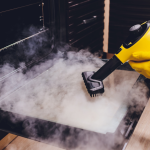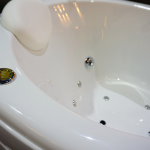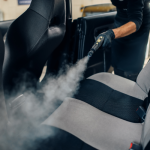Whether you’re driving an antique vehicle or the latest, most advanced model, leather seats add a touch of class to any car. Although trends and technology may change, leather remains a constant symbol of elegance.
Elegance and style come with responsibility
However, great style also comes with great responsibility. Your seats won’t avoid stains, whether it’s from spilling your favorite drink or returning from a sandy beach escapade. Although individual crumbs or stains may seem insignificant, they can significantly mar the overall look of your car. Worse still, you can’t simply use any cleaning agent for tough stains on leather car seats. So, what care does leather upholstery require?
When animal skin is processed into upholstery leather, it loses the ability to produce natural oils that keep it supple and moisturized. Therefore, we need to wash and moisturize it manually to maintain its softness and silkiness. If you want the leather upholstery in your car to remain as velvety as the day of purchase, you need to clean and care for it regularly.
Luckily, cleaning leather car seats is not as hard as it seems. Having the right knowledge about proper maintenance of leather seats will help maintain their condition as perfect as at the time of purchase.
What do you need to clean leather car seats?
In most cases, we put more emphasis on cleaning the exterior of the car than the interior. Dirty windows and muddy wheels are visible to everyone, while the remains from a McDonald’s visit can somehow be hidden. A sponge, hose, and a bucket of soapy water are enough to clean the exterior of the car. It’s simple. But cleaning the interior of the car seems to be a bigger challenge. So, how to effectively and safely clean leather car seats?
Cleaning leather seats yourself may seem a bit daunting, especially if you’re doing it for the first time. Don’t worry, there are a few simple things you can do to properly prepare your seats for professional treatment. By following the steps below, you will gladly clean the seats regularly, leaving them in perfect condition.
Step 1: Remove Contaminants
If you have children or pets, you probably have a child seat or raised pet seat in your car. You can easily clean the seats by removing these items and any trash or other larger obstacles. This is also a good time to detect and remove any mud or dirt that children may have left after a snack. You can also take this opportunity to clean the child seat, for example, before reinstalling it in the car.
Step 2: Use a vacuum cleaner
Vacuuming the seats and the area around them will help remove annoying crumbs and contaminants. If you have a vacuum cleaner with a soft tip, you can use it to clean the seats without risking scratching or scuffing. Make sure you thoroughly reach all corners. To more accurately remove traces of dirt and dust from various crevices of the seat, you can use a soft cloth.
Step 3: Remove stubborn stains
Although a vacuum cleaner handles loose contaminants well, sometimes it may not cope with other types of dirt. If this happens, remove tougher stains using a damp microfiber towel soaked in a cleaning agent. This method is perfect for removing sticky residues from spilled children’s juices or melted gummy bears. After removing the top layer of dirt and contaminants, you can proceed with a thorough cleaning of the seats.
Step 4: Apply a cleaning agent
After testing on a small area, you can apply the cleaning agent to the rest of the car seats. You can create foam using a soft brush and a cleaning agent. This will help dissolve stubborn stains, dirt, and creases in the upholstery. Remember to use a minimal amount of cleaning agent so as not to soak the seat. To avoid stains and discolorations caused by the cleaning agent, it is recommended to wash gradually, in small areas.
Step 5: Wipe thoroughly
Now that the seats are thoroughly cleaned, remove excess cleaning agent with a slightly damp towel. This will prevent the accumulation of dirt on the car floor. Speaking of the car floor, consider buying a car mat, which will make cleaning easier when crumbs and other residues from the seats finally fall onto the floor.
Step 6: Finish cleaning with a microfiber cloth
After the first dry towel wipe, you can continue cleaning leather seats using a dry microfiber cloth. Removing excess moisture from the seat surface will help prevent the growth of mold and fungi. Remember to thoroughly dry the seats to avoid wrinkles and cracks.
DIY – Effective leather cleaning agents
Homemade cleaning agents are perfect for cleaning leather seats. Check out what’s worth reaching for?
Vinegar
Vinegar has antibacterial properties and won’t harm your seats in any way. Simply spray the seat area that needs cleaning, and then wipe it with a fresh, dry towel.
Baking soda
Baking soda absorbs dirt and moisture very well. If you decide to use baking soda, remember to use a conditioner after cleaning.
Isopropyl alcohol
Stains on leather seats can be gently wiped with isopropyl alcohol. Wipe the seats with a damp, lint-free towel or cotton ball soaked in alcohol. After removing the alcohol, you can use dish soap, diluted in warm water and a soft cloth to remove alcohol residues.
DIY – Effective leather conditioners
Staying on the subject of homemade ways to care for leather upholstery, be sure to test these homemade leather conditioners.
Coconut oil
Coconut oil is not only beneficial for skin and hair, but also works wonders for leather furniture. When it penetrates into the cracks of light leather car seats, it restores their smoothness. However, remember that it works great as a conditioner, but it is not a cleaning agent.
Leather conditioner with beeswax
Beeswax is an antifungal substance that protects leather surfaces from mold, bacteria, and other unwanted creatures. It also restores the skin’s natural water resistance, which extends its durability. Massage a thick layer of balm into the skin with your fingers, then remove the excess with a microfiber towel.
Linseed oil
After applying linseed oil, which absorbs well into the skin pores, leather seats gain a beautiful shine. Moreover, linseed oil protects them from degradation caused by moisture. It is unlikely that linseed oil will cause allergic reactions, so it is a great substitute for commercial (not necessarily natural) conditioners.




